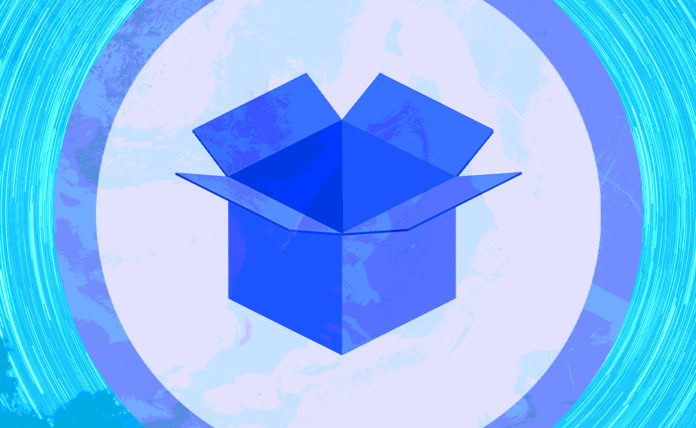

The future of drone delivery systems—NEM Catapult and the Internet of Things
Blockchain and IoT can solve current and future problems in the drone delivery industry through secure ownership, access control, data logging and point-to-point delivery.

As an Amazon Prime member, I enjoy the benefits of purchasing health care products online, such as: more competitive prices, better quality, and faster delivery. High-quality probiotics cost $65-$90 per bottle. However, delivery time and shipping conditions (i.e. temperature and humidity) must be optimal to produce successful delivery and ensure survival of the probiotic bacteria.
Most supplement companies don't even bother to package their probiotics in dry ice. Most mail is sent using U.S. Postal Service First Class Mail, which generally takes 3-5 business days, and a small number of mail is delivered in 2 days using dry ice. Even so, by the time consumers receive their packages, the dry ice has melted, calling into question the viability of the probiotics.
In 2015, Amazon launched a "Prime Air" drone delivery system that can deliver packages to homes within 30 minutes. It would be wonderful to receive probiotics on the same day, at the optimum temperature.
Amazon's Prime Air delivery hasn't quite delivered as promised, but Amazon seems fully committed to making it happen. Now, other companies, including Google and Walgreens, are working to implement driverless delivery. Google X (Project Wing) is an autonomous delivery drone delivery service. It will launch a trial of delivery from participating Walgreens to homes within 6 miles.
Project Wing offers a wealth of opportunities, from providing medical prescriptions to emergency equipment such as defibrillators. Project Wing not only makes shopping more convenient, it may also save lives.
Drone delivery system challenges and blockchain solutions
Last year, the FAA predicted that 452,000 commercial drones would be in service by 2022. Current predictions are that the industry will reach this size early next year. The U.S. Federal Aviation Administration (FAA) predicts that the commercial drone market will triple in the next five years and will reach 835,000 units in 2023.
Commercial drones are used for research, pilot training, photography, building inspections and a range of other professional activities and are generally more expensive and more durable than model aircraft used by hobbyists. But according to the FAA, the number of recreational drones is much higher. Today, officials estimate that there are approximately 1.25 million amateur drones in use across the country, with the market expected to grow to 1.4 million by 2023.
As major companies like Google and Amazon move to launch drone delivery programs for public use, the skies may be filled with thousands of drones sooner than we imagine. As drones take flight, we will face both opportunities and challenges.
Without appropriate auditing, tracking and security programs and measures, drone technology could do more harm than good. Currently, each drone manufacturer controls their own drones through their own proprietary protocols—they cannot communicate with other drones efficiently and securely. This can be a problem for airspace management, which often requires drones to fly simultaneously.
Drone backend architecture is also at risk of being disrupted or disrupted by its traditional centralized nature. Drones also need to be able to communicate with each other securely, regardless of brand. In the future of the Internet of Things, interoperability between devices is a must—and that includes drones, since they are essentially autonomous flying computers.
Malicious actors may also try to exploit drones through hackers and malware. Drones have to be safe, and they have to be safe from the public's perspective, because it's not a good sign for delivery drones to be seen as a threat.
In delivery, there are multiple stakeholders that require a level of information transparency to protect their interests, namely senders, receivers, regulators and insurance companies.
Using blockchain technology, we can alleviate many of the pain points of drone delivery, provide solutions to the above problems, and reveal the true meaning of the Internet of Things through fully distributed, resistive and fault-tolerant solutions. A multi-purpose, micro, blockchain-enabled IoT device will be responsible for facilitating all drone interactions with the blockchain. This IoT device communicates directly with the blockchain without the need for an intermediary server, ensuring complete security.
Drones are increasingly used in other commercial applications as well; however, this article will focus specifically on delivery as it raises many questions about publicly flown equipment that could potentially be exploited.
Why choose blockchain?
Blockchain combines many aspects of a good backend solution: decentralization, redundancy, fault tolerance, security, and scalability. In addition to being architecturally reliable, the blockchain also acts as a validator for all information sent to it. Digital identities, signatures and ownership can be easily verified through unique cryptographic keys and recorded in a ledger-like format. Sensor, analytics and trip data from the drone can also be signed and recorded on the blockchain, leaving an auditable and permanent trace.
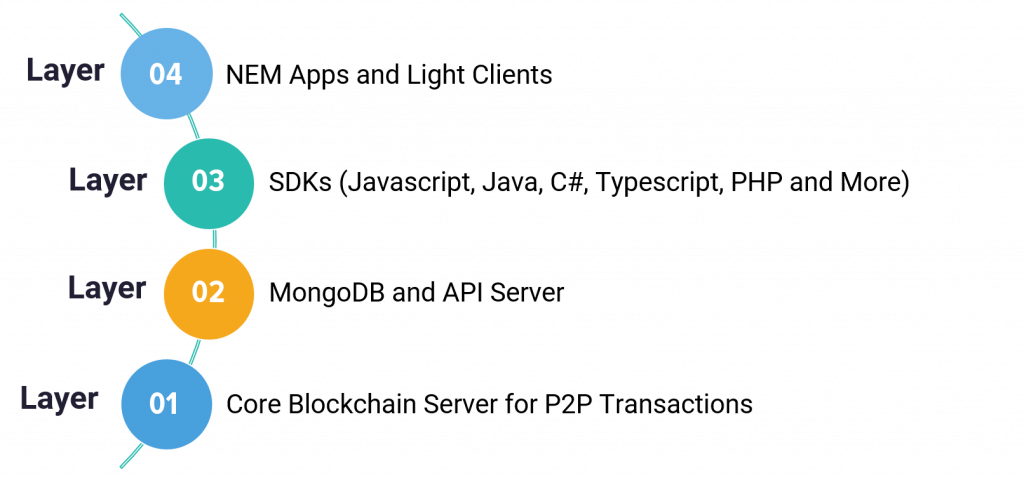
Why choose NEM blockchain?
The Catapult blockchain in particular has a lot of built-in features, such as multi-signature access, metadata, atomic smart contracts, and special "rules" (restrictions) that you can assign to accounts on the chain. Catapult is also available through a standard REST API interface, meaning that IoT devices do not require mining or staking.
Catapult is a very practical blockchain option that has adapted to industry standards. These capabilities will become extremely useful in defining ownership, access control, and peer-to-peer smart contracts, and will allow drones to experience truly and fully secure autonomous capabilities without sacrificing computing resources.
Using blockchain to secure drone deliveries
Since IoT devices are already configured to work directly with the blockchain, it only requires sensor input from the outside. In this case, the drone will provide all information to the IoT device, including flight telemetry, trip, geospatial and other ToF (time of flight) data.
Fortunately, DJI has created a line of commercial drones that are already capable of communicating directly with IoT devices via standard serial communications. DJI also has a powerful onboard SDK which gives us full access to all the drone’s features, sensors and internal flight controllers. Combined with a compatible IoT device, DJI drones are ready to be configured as a fully blockchain-enabled delivery drone right out of the box!
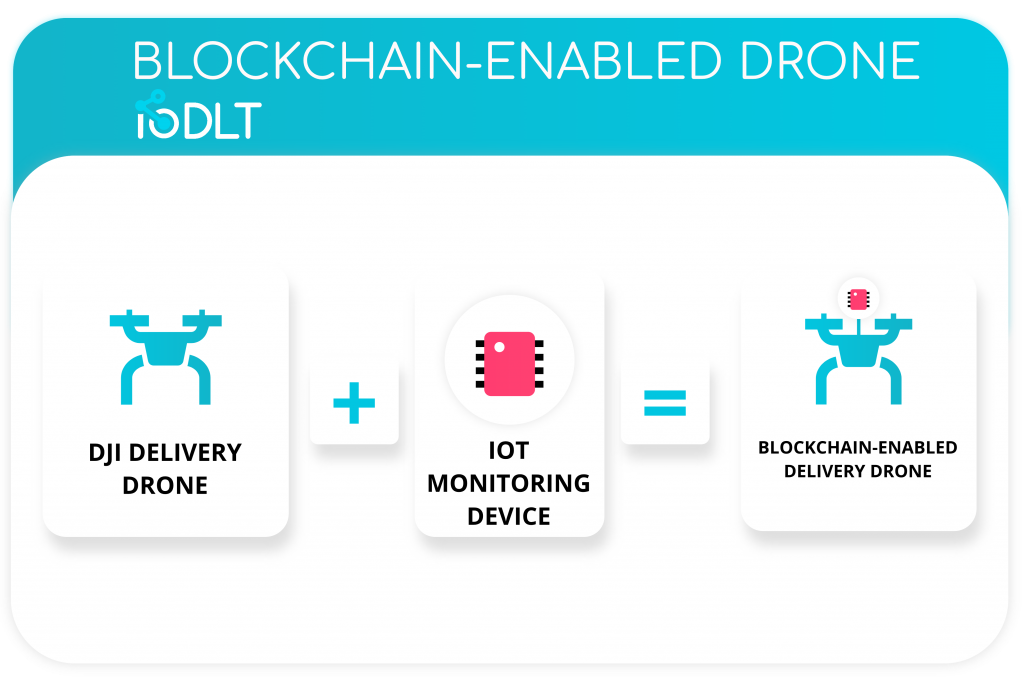
In every send, there is more than just the sender and receiver involved. Drone manufacturing companies, senders, receivers, insurance providers and potentially regulators may need access to drone travel data. Using Catapult as the aggregator of all drone telemetry data, we can leverage appropriately named aggregate transaction types on Catapult to record a time record of on-chain events. This record will be sent to all stakeholders in the delivery process. Multi-key encryption schemes, such as Shamir's secret sharing, can be used for distributed encryption among all authorized parties.
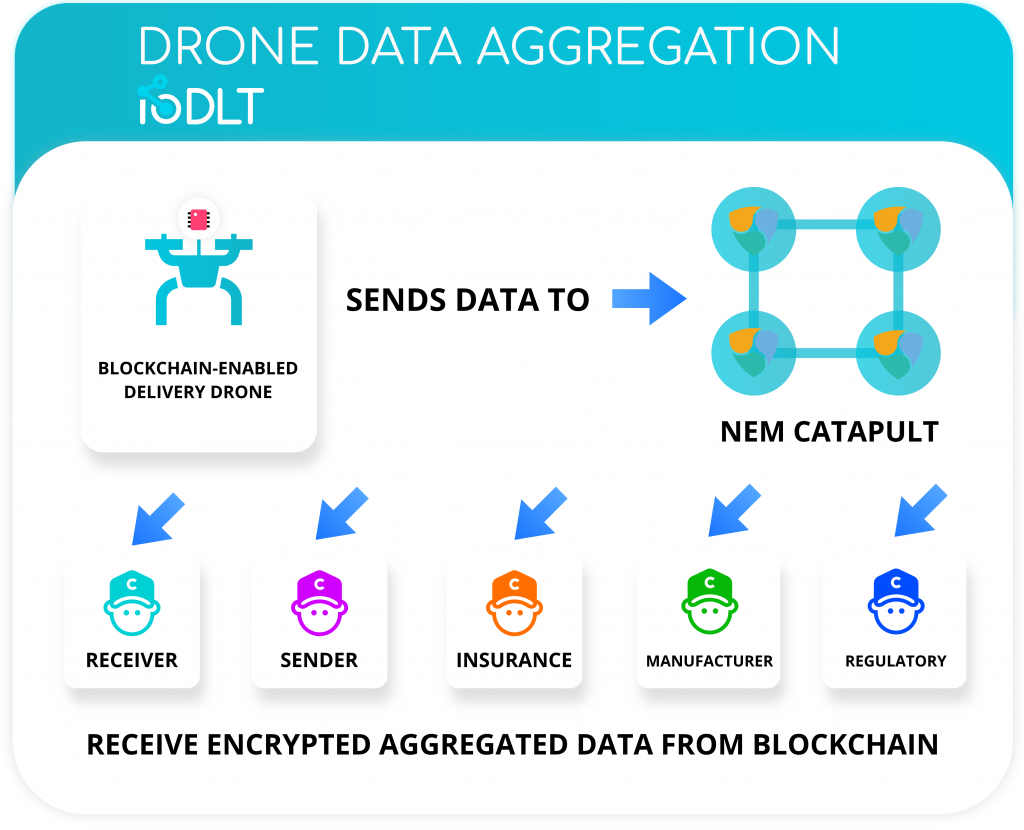
Access control could be structured in the form of a partnership between the drone and the company that owns it, allowing only that company to control the drone via blockchain and public key encryption. If a drone is commanded to go to specific GPS coordinates, or any other action, it will first receive a verification chain from its owner (or other appropriate number). With multi-signature, this also means ownership can be transferred from one business to another.
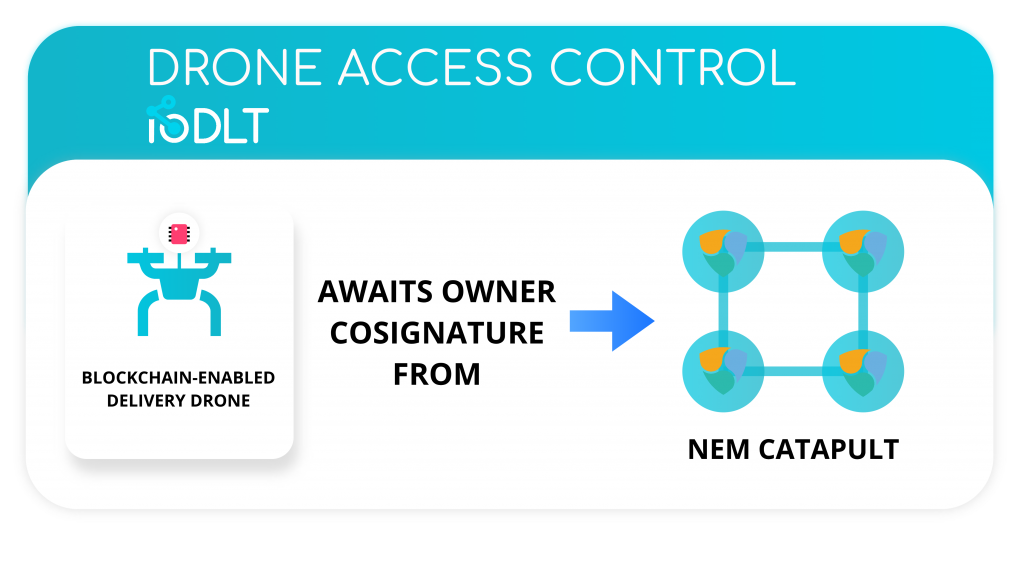
Blockchain can also serve as a form of distributed communication for drones. For coordination, communication with other drones can be done openly. On NEM, we can tag drones within a specific area with a token. Drones with this token only need to update within their designated area and check for other drones that may be in the same airspace. Other aircraft can also interface with the blockchain to view blocked or open airways, as well as any issues that arise during the flight that other aircraft need to be aware of.
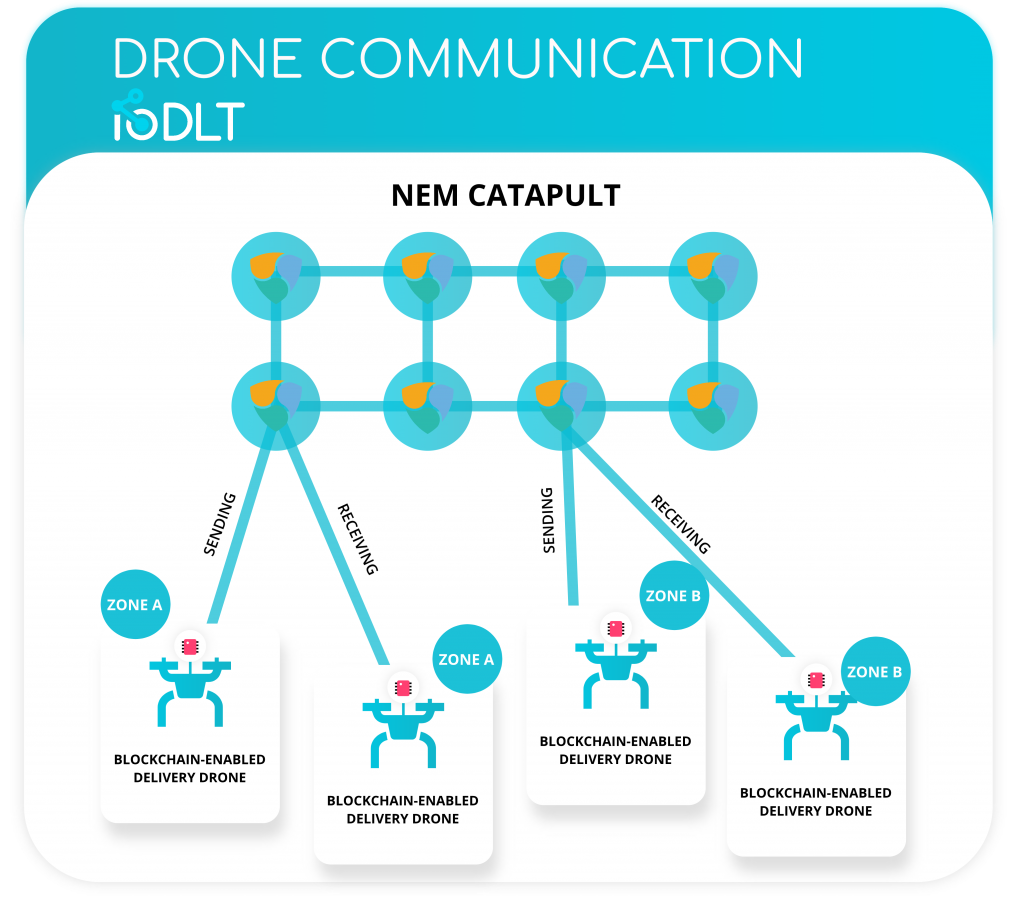
When many drones are working at the same time, accidents are inevitable. Insurance companies need information to determine the cause and conditions of an accident. Using onboard tracking solutions for IoT devices (similar to black boxes on airplanes), drones can record flight telemetry and environmental conditions before a crash or malfunction occurs. This is also a great use case for decentralized analysis and detection mode to observe what went wrong, where it went wrong, and what type of drone was used. This valuable data can be sold on the blockchain as a decentralized marketplace, where manufacturers and operators can buy and sell drone data using a public token. This data can be used to improve the functionality, economics and safety of future drone flights.
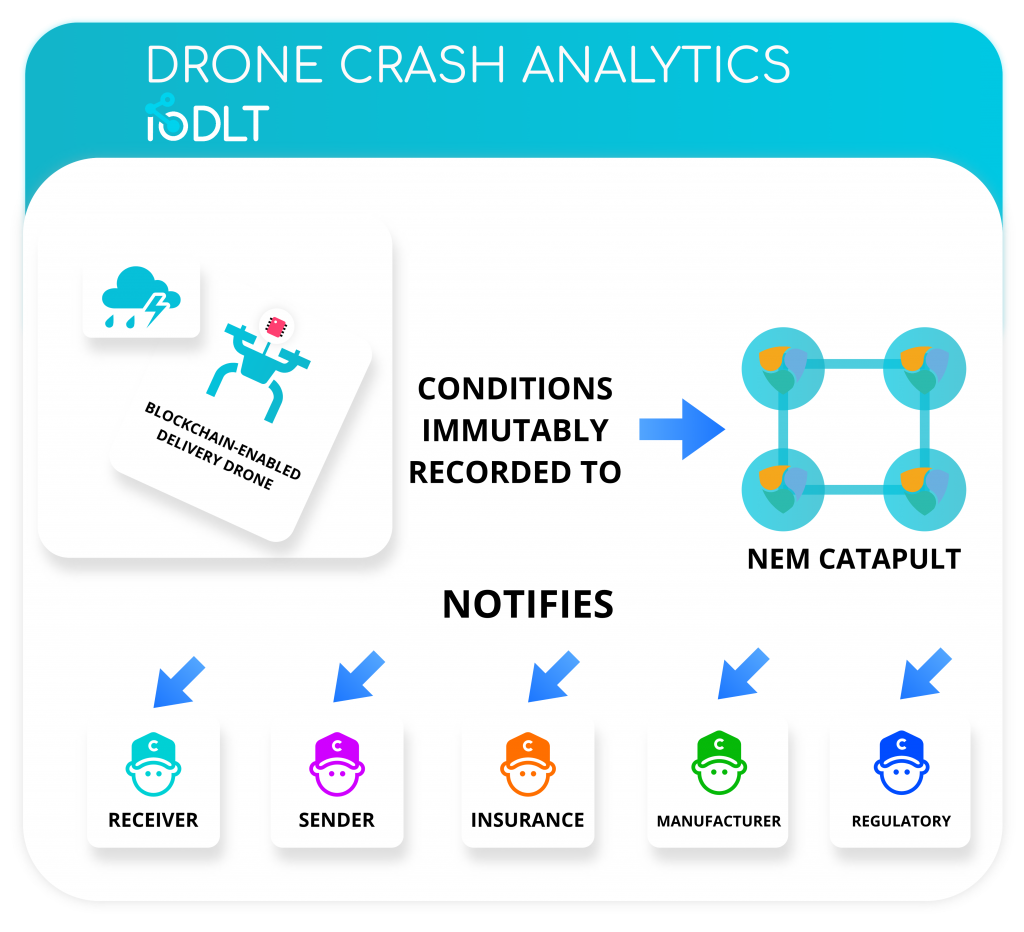
With every delivery recorded on-chain, this also opens up the possibility of more peer-to-peer methods for drone delivery. In our example, a fleet of DJI delivery drones could be assigned to each city. If someone wants to move a package quickly from one home to another, they can request a drone to pick up the package. At the same time, the funds delivered are hosted on the blockchain. The drone will send the data to the requested address and then mark the transaction as complete. For higher value packages, the IoT device on the drone can even communicate with another IoT device in the home, opening the garage or window and allowing the drone to deliver directly.
Once a point-to-point delivery occurs, the funds are handed over to the drone delivery company and the entire trip is recorded on the chain. In the meantime, previous security measures have been implemented, with each party being updated every step of the way. As transactions are settled on the blockchain, the interactions between senders, receivers, and delivery services become more unreliable.
Since drones are likely to utilize public airspace to deliver these goods, it is possible to increase transport efficiency by utilizing private airspace. To achieve this, landowners could be incentivized to automatically receive tokens when drones fly over their respective airspace.
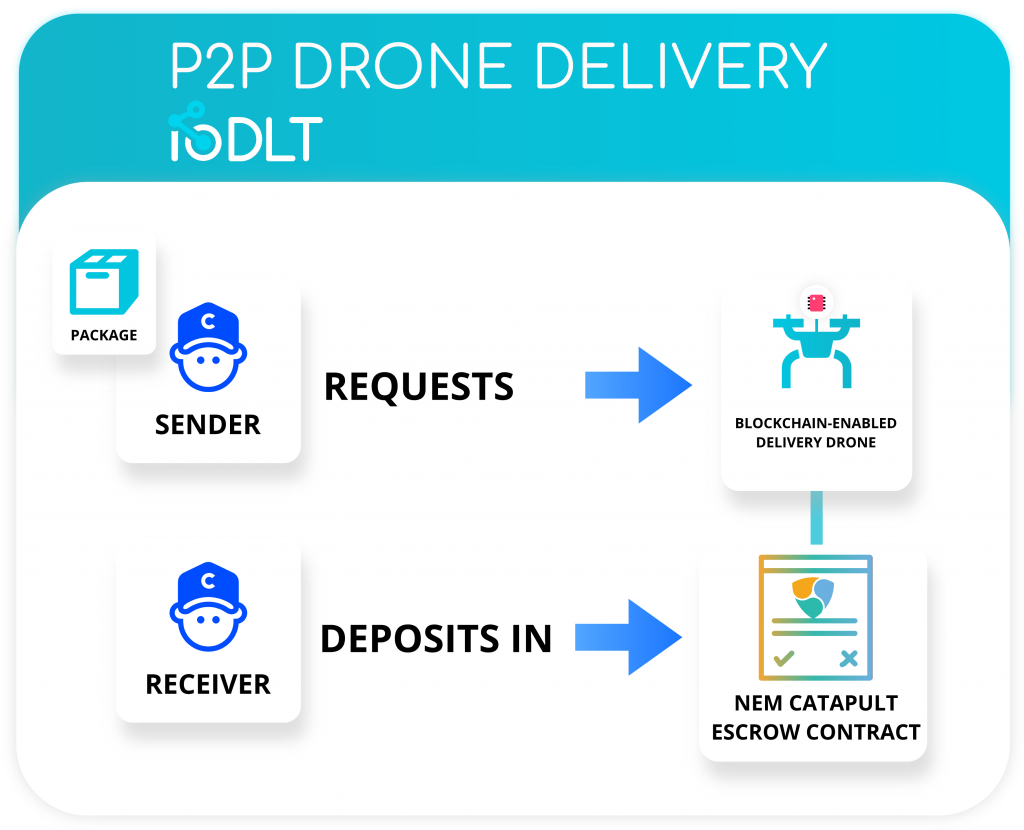
in conclusion
As drone deliveries quickly become a reality, future needs for security, coordination and logging are a must. Using blockchain can greatly help solve these problems, and coupled with an IoT monitoring device, multiple inputs can be used to transform drones into safer flying aircraft. Therefore, there is a need to ensure that drones are not vulnerable to malicious parties, which can be done by creating auditable verification paths and paving the way for the future through standardization of communications and protocols between different manufacturers and operators.
Original author: IoDLT
This article is from a translation, if you want to reprint, please obtain authorization from this site first.
